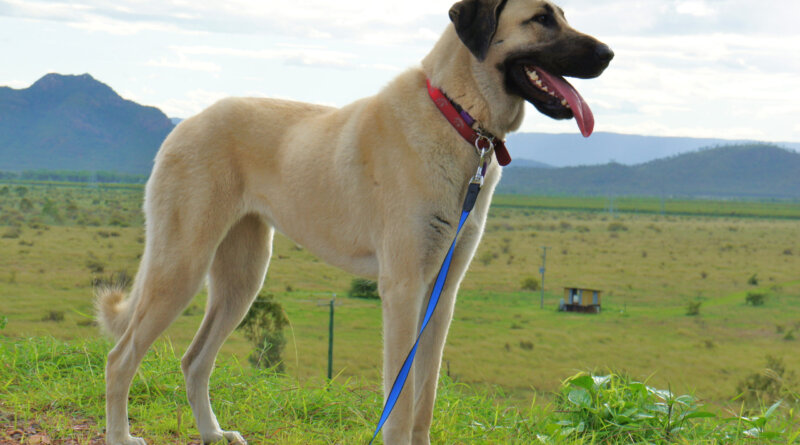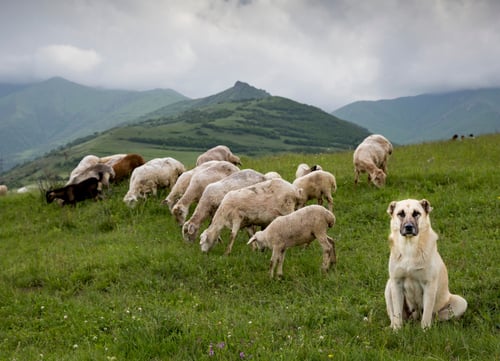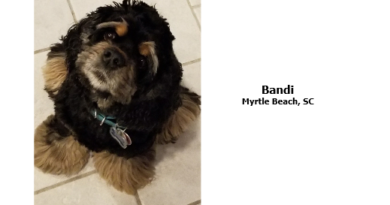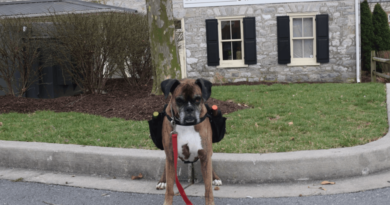Anatolian Shepherd Dog Breed Profile – Top Dog Tips
The Anatolian Shepherd dog is a fascinating and ancient dog breed with a rich history and unique traits.
As a large and intelligent dog, Anatolian Shepherds have been used for centuries to protect livestock and their human families from predators.
In this breed profile, we will dive deep into the world of Anatolian shepherds and explore their history, appearance, temperament, and more.
This comprehensive guide will help you decide if this breed is the right fit for your lifestyle.
Anatolian Shepherd Dog: A Brief Look
The Anatolian Shepherd Dog, also known as the Karabash Dog, is an ancient, large, and powerful breed from the Anatolian Plateau in modern-day Turkey.
These magnificent dogs have been bred for thousands of years to protect livestock from predators such as wolves, bears, and even lions.
As a result, the Anatolian Shepherd has developed a strong and independent temperament that is well suited to life as a guardian and protector.
Outside of Turkey, the Anatolian Shepherd has grown in popularity recently.
Many dog lovers recognize the breed’s incredible abilities and distinct characteristics.
Keep reading to find out all there is to know about the Anatolian Shepherd.
The History of the Anatolian Shepherd Dog
The Anatolian Shepherd is a 4,000-year-old dog breed.
Nomadic shepherds first used these dogs to protect livestock and their families in the harsh landscape of the Anatolian Plateau.
The breed was created by crossing local and imported dogs, resulting in a strong and adaptable animal that could withstand the region’s harsh conditions.
Before, the Anatolian Shepherd was bred selectively as a guardian dog capable of protecting livestock from predators while remaining loyal and obedient to its shepherd family.
For this reason, the Anatolian Shepherd is known for its close relationship with its human family and ability to function alone when guarding livestock.
Anatolian Shepherd vs. Kangal: Understanding the Differences
More clarity is often needed when distinguishing the Anatolian Shepherd from the Kangal, another Turkish breed with similar origins and characteristics.
While both species are powerful and protective, some significant differences distinguish them.
Male Anatolian Shepherds can weigh up to 150 pounds, while females weigh around 120 pounds.
Male Kangals typically weigh 110-145 pounds, while female Kangals weigh 90-120 pounds.
The Anatolian Shepherd also has a more diverse coat color palette. The Kangal is a fawn with a black mask.
The Anatolian Shepherd is more independent and aloof than the Kangal.
Despite these differences, both breeds are popular companions for those looking for strong and capable guardians due to their intelligence, devotion, and protectiveness.
The Physical Traits of an Anatolian Shepherd
Size
Male Anatolian Shepherds stand 29-32 inches tall at the shoulder, while females average 27-30 inches.
The average weight of a female Anatolian Shepherd is between 90 and 120 pounds, while a male can weigh up to 150 pounds.
Because of their size, they can work as effective protectors, repel large predators, and keep their charges safe.
Colors
The coat comes in various colors and patterns and is one of the Anatolian Shepherd’s most distinguishing features.
Fawn, white, and brindle are the most common colors, with the Anatolian Shepherd brindle coat standing out.
A combination of dark and light hairs distinguishes this coat pattern, giving the dog an attractive appearance.
They may have black masks or ears and white markings on their chest, legs, and tail.
Their dense undercoat keeps them warm and dry, and their outer coat is short to medium in length.
The Temperament of Anatolian Shepherds
Anatolian Shepherd Dog Behavior
Over thousands of years of breeding, the Anatolian Shepherd developed its reputation for autonomy and protectiveness.
Extremely devoted to their human families, these canines will do anything to keep them safe.
However, this protective instinct can also make them wary of strangers, so proper socialization is crucial for an Anatolian Shepherd to be a well-rounded companion.
Training and Socialization
Any dog breed needs training and socialization, but the Anatolian Shepherd needs it most.
These dogs can be stubborn and hard to train because of their independence.
You can train your Anatolian Shepherd to be well-behaved and obedient with patience, consistency, and positive reinforcement.
Exposing your dog to different people, places, and experiences from a young age can help them become confident and well-adjusted adult dogs.
The Role of Anatolian Shepherds as Protectors
Turkish Shepherd: The Traditional Role
Turkey’s Anatolian Shepherds have always protected livestock.
These dogs have been bred for thousands of years to protect flocks of sheep and goats from predators such as wolves, bears, and even lions.
The Anatolian Shepherd is fearless and tenacious when defending its flock, often working alone and patrolling the grazing area.
Modern-day Applications
Anatolian Shepherds are still valued for their protection, even though they no longer guard livestock.
Anatolian Shepherds have helped protect endangered species like cheetahs from poachers in recent years.
Their size, strength, intelligence, and loyalty make them ideal guardians and protectors.
Caring for an Anatolian Shepherd
Exercise and Dietary Needs
As a large and active breed, the Anatolian Shepherd requires significant exercise to stay healthy and happy.
Your Anatolian Shepherd needs daily walks, supervised playtime in a securely fenced yard, and mentally challenging activities to maintain a healthy and happy lifestyle.
It’s also crucial to provide your dog with a balanced meal and a nutritious diet tailored to its size, age, and activity level.
You may opt for a high-quality lamb and rice or chicken and rice-based food and avoid high-protein commercial foods or beef-based foods.
Health Considerations
Anatolian Shepherds are generally healthy, with an 11 to 13 years lifespan.
Hip dysplasia, elbow dysplasia, and hypothyroidism are just some of the diseases that can affect these dogs, as they are large and heavy.
For a long, healthy life with your Anatolian Shepherd, taking him in for regular checkups at the vet and practicing preventative care is important.
Things You Probably Didn’t Know About the Anatolian Shepherd Dog
They are a Relic of the Past
Ancient artifacts from the Anatolian region, dating back to 2000 B.C., describe a dog with characteristics similar to the modern Anatolian Shepherd.
Large dogs were commonplace among the flocks in the ancient Turkish setting of the “Book of Job,” written around 1800 B.C.
The Turks Hid the Breed from the World
Even though they have probably been around for thousands of years, the Turks prevented the export of Anatolian Shepherd Dogs until the twentieth century due to their high value.
Although American ranchers had begun importing Anatolians by the 1950s, the Breed did not become widely known until the 1970s.
A Top-Secret Government Program Brought Them to the United States
The US imported its first Anatolian Shepherd Dog in the late 1930s as part of a Department of Agriculture project to find the best sheepdog.
The program’s supervisor, Secretary of Agriculture Henry Wallace, didn’t know the Anatolian Shepherd Dog.
He learned about the breed and experimented at a White House dinner with a Turkish ambassador.
The ambassador promised the secretary a male and female dog.
The dogs quickly ruined the construction site. The female dog was pregnant and was parasite-sick.
She had 12 puppies, who quickly devoured the project. Selling the dogs ended the experiment.
Americans are Very Good at Defending Endangered Species
After the passage of the ESA in 1973, interest in Anatolian Shepherd Dogs increased significantly in the United States.
The ESA raised a conundrum: how to manage predators of livestock that are legally protected from being killed.
Dogs specifically trained to protect livestock, such as the Anatolian Shepherd Dog, were used to solve the problem.
They Protect Namibian Cheetahs
Anatolians have helped Namibian cheetah conservation since 1994.
Ranchers killing cheetahs to protect their livestock contributed to their decline.
Namibia’s Cheetah Conservation Fund encouraged ranchers to use Anatolian Shepherd Dogs to defend their flocks instead of killing cheetahs.
The Anatolians’ guard dog farms have cut livestock losses by 80–100%, helping cheetah conservation.
Is the Anatolian Shepherd the Right Breed For You?
The Anatolian Shepherd’s unique traits and abilities make them a great breed for the right person.
Suppose you are looking for a loyal and protective companion and have the time and patience to train and socialize an independent and powerful dog.
In that case, the Anatolian Shepherd may be the perfect fit.
However, it’s essential to consider their size, exercise needs, and potential health issues before committing to this impressive and committed breed.
Anatolian Shepherd Dog: Conclusion
The Anatolian Shepherd is a unique and interesting dog breed with a long history and many good traits.
They are smart, loyal, and have instincts to protect, which makes them great pets for the right owner.
But for everyone, there are better options.
Before getting an Anatolian Shepherd, consider whether you have the time, space, and money to train as well as to socialize and exercise it how it needs.
If you spend time learning about and caring for your Anatolian Shepherd, it will be a loyal and loving friend.
READ NEXT: The Australian Shepherd








